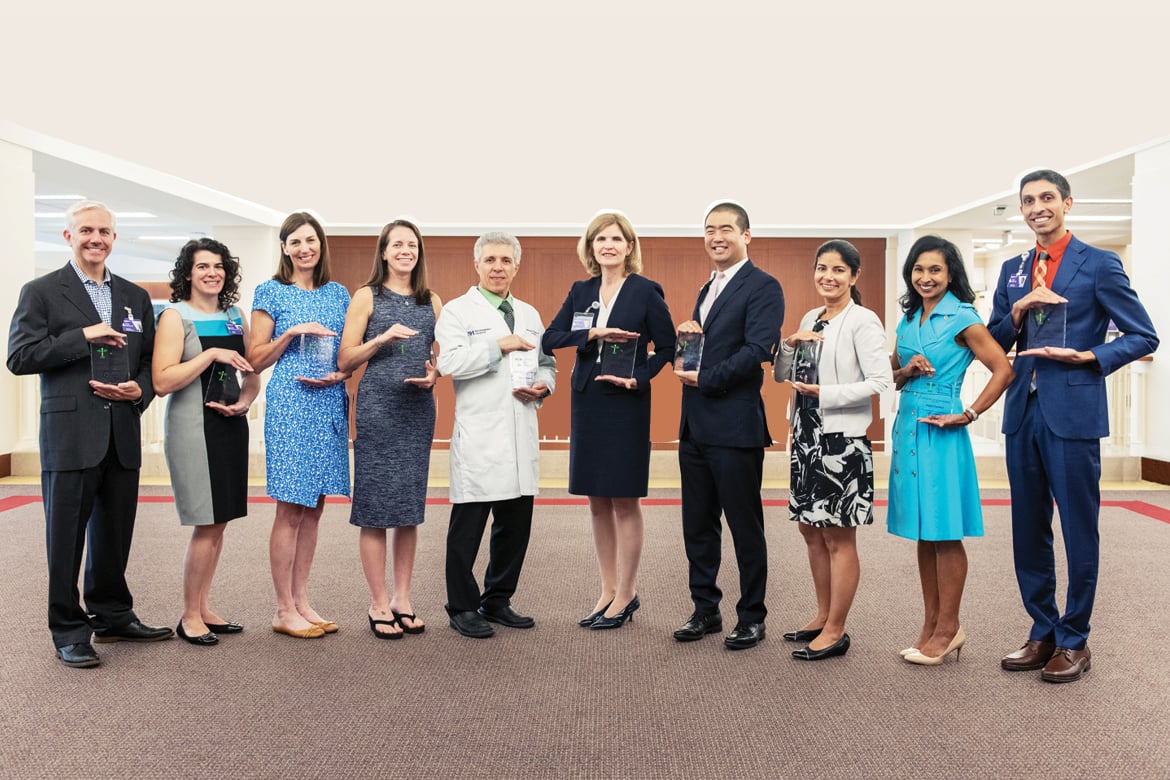At Northwestern Medicine, 10 physicians participated in the “Scholars of Wellness” program to drive meaningful change in their departments. The result? 10 different solutions to help reduce physician burnout and influence change.
Northwestern Medicine, in Chicago, recently received recognition from the AMA’s Joy in Medicine™ Recognition Program, which is designed to guide and inspire organizations committed to improving physician satisfaction and reducing burnout.
Committed to making physician burnout a thing of the past, the AMA has studied, and is currently addressing issues causing and fueling physician burnout—including time constraints, technology and regulations—to better understand and reduce the challenges physicians face. By focusing on factors causing burnout at the system-level, the AMA assesses an organization’s well-being and offers guidance and targeted solutions to support physician well-being and satisfaction.
The now expanded year-long Scholars of Wellness program—created by Gaurava Agarwal, MD, a psychiatrist and director of physician well-being, and Joan Anzia, MD, also a psychiatrist—provides training and resources to help address drivers of burnout within their teams.
At the end of the year, 60% of the scholars agreed or strongly agreed that their burnout had decreased. All scholars also felt more comfortable working with leadership and administration to complete tasks and promote change. And 70% felt more confident in recommending Northwestern Medicine to a colleague as a desirable place to work.
“We invest in select faculty whom we wish to be wellness leaders in our organization for years to come,” said Dr. Agarwal. “In addition, the pilot projects enable physicians to apply new skills and knowledge to benefit not only their own departments, but also the broader organization.”
For example, the success of two pilot peer support programs created by scholars demonstrated their value. As a result, a peer support program will be rolled out for all faculty physicians this year, said Dr. Agarwal, adding that, “The strength of the program is that it facilitates transformative change.”
These are the 10 solutions created by the physicians who participated in the Northwestern Scholar of Wellness program.
Internal medicine: Rajan V. Shah, MD, reorganized the team structure to include medical assistants and patient service representatives to improve physician support. He also created more efficient workflows for support staff and heightened individual awareness of team member roles. Physicians reported better teamwork, improved professional fulfillment and decreased burnout.
Emergency medicine: D. Mark Courtney, MD, found that 71% of physicians perceive the EHR to be a major detractor to professional well-being and spend excessive amounts of time in it. His solution? He provided individualized data on actual time spent in Epic and allowed for comparison to identify outliers. This allowed for targeted and personalized optimization for attendings that wished to receive additional training to improve their efficiency and satisfaction with the EHR.
Ophthalmology: About half of ophthalmologists expressed a need to spend less time after work in the EHR. To improve satisfaction, decrease stress and relieve workloads, Manjot Gill, MD, introduced medical scribes. With scribes, burnout was decreased while enhancing the patient-physician relationship.
Radiology: Sitting at a workstation all day can lead to repetitive stress injuries and decreased productivity. Jeanne M. Horowitz, MD, found that one size does not fit all. She created an ergonomics committee so that faculty voices could be heard, and a sense of control returned. The committee recommended ergonomic improvements such as new adjustable chairs, wrist pads and computer mice.
Primary care: Anne Schultz, MD, focused on previsit planning to close patient care gaps identified by quality indicators. Through team-based care, medical assistants and licensed practical nurses were trained to review the schedule prior to the patient visit to identify patient care gaps. This assured that all team members were working at the top of their licensed and reduced physician workload.
Anesthesiology: Jenna Swisher, MD, expanded a peer support program for the anesthesia department. She was able to increase peer support utilization and expand relationships in the organization for event notification.
Surgical oncology: More than half of surgeons say they don’t have enough time to complete their work. Anthony Yang, MD, worked with surgeons and administrative assistants to create a standard list of support functions. This list for administrative assistants encouraged collaboration and reduced faculty workload.
Psychiatry: A significant source of distress and burnout in psychiatry is a lack of clinical coverage for planned and unplanned absences. After conducting focus groups, Mehmet Dokucu, MD, PhD, worked with department leadership to approve defined financial and motivational incentives. This helped create a voluntary pool of faculty who can be relied on to provide coverage for their colleagues.
Surgery: Physician educators find meaning in teaching, but the administrative components can be burdensome. In a true win-win, Amy L. Halverson, MD, turned to administrative assistants to simplify the trainee assessment process. This improved timeliness of student assessments and reduced faculty workload.
Obstetrics and gynecology: Many gynecologists reported emotional exhaustion due to surgical and obstetric complications. Angela Chaudhari, MD, created a peer support group for these adverse events. The program was able to reach out to 100% of physicians within 72 hours of event identification allowing for physicians to feel cared for and learn coping skills.




